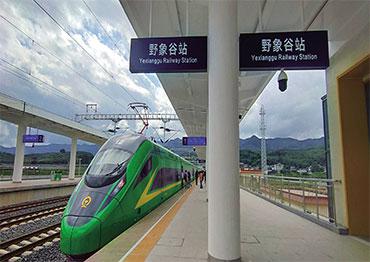Many analysts described the railway as a “game changer” that could kick-start Laos’ mostly agrarian economy. But ever since the Lao-China Railway broke ground in 2015, there has been heated discussion about the economic viability of the project. With total investment of US$5.9 billion, many in the West questioned its financial viability given Laos is one of Asia’s poorest countries with a population of just 7.3 million.
But supporters say the project’s debt problem is over-exaggerated. According to the 2020 World Bank report “From Landlocked to land-linked – Unlocking the Potential of Lao-China Rail Connectivity,” the total investment of US$5.9 billion was funded with 40 percent in equity and 60 percent debt through a joint venture between the two countries in which Laos holds 30 percent of shares and China 70 percent.
Under the arrangement, the Lao government handles only 30 percent of the US$2.3 billion equity payment, which amounts to US$730 million. With a US$465 million concessionary loan from the Exim Bank of China with an annual interest rate of just 2.3 percent over 35 years, the Lao government’s direct contribution from its budget to the project is only US$250 million, which is about 7 percent of Laos’ government revenue in 2015, and spread over five years.
“While the railway may exert financial pressure on the Lao government in the short term, it could substantially boost the country’s economic development in the mid and long term,” Li Mingjiang, associate Professor at S. Rajaratnam School of International Studies at Singapore-based Nanyang Technological University told NewsChina.
“As geographic disadvantages are the No.1 factor hindering economic development, in Laos, the China-Laos railway has the potential to become the driving force of Lao’s economic growth in the long run,” Li added. The country is so mountainous that only 38 percent of the Lao-China Railway runs on open land, with the rest requiring 72 tunnels and 170 bridges, the main reason the railway costs so much.
According to the World Bank report, the railway could reduce shipping costs between Kunming and Vientiane by 40-50 percent, a reduction of about US$30 per ton. Within Laos, the report expects the overall cost of trade to drop by 20-40 percent. As of 2016, only 37 percent of the total 3.25 million tons of bilateral trade between China and Laos was transported by land. Trade between China and Laos accounts for less than 2 percent of the total trade tonnage between China and ASEAN countries.
With reduced transportation costs, the report said the railway presents a “significant opportunity” for Laos to attract cargo and passenger traffic away from the maritime routes between China and ASEAN countries. It estimated the railway would transport 3.9 million tons of goods by 2030, diverting 1.5 million tons of trade from maritime routes. In the long run, the railway can increase aggregate income in Laos by up to 21 percent, concluded the report.
But to maximize the benefits of the railway, the World Bank report stressed the Lao government needs to conduct complementary policy reforms. “The Lao government has shown strong political will to conduct reforms,” Li said. “Its next step should be to expand its road network to take full advantages of the opportunities the railway presents.”
With completion of the railway in sight, trade between China and Laos had already picked up in the past couple of years. In the first half of 2021, trade between China and Laos reached US$2.3 billion, up by 48 percent over the same period in 2020, with Laos’ exports to China up by 60 percent to reach US$1.43 billion.
On May 31, 2021, China signed a deal with Laos to purchase nine types of agricultural produce worth over US$1.5 billion between 2021 and 2025. The two governments are also reportedly in talks over opening China’s market to the import of more than 90 agricultural products from Laos by 2025.

 Old Version
Old Version
